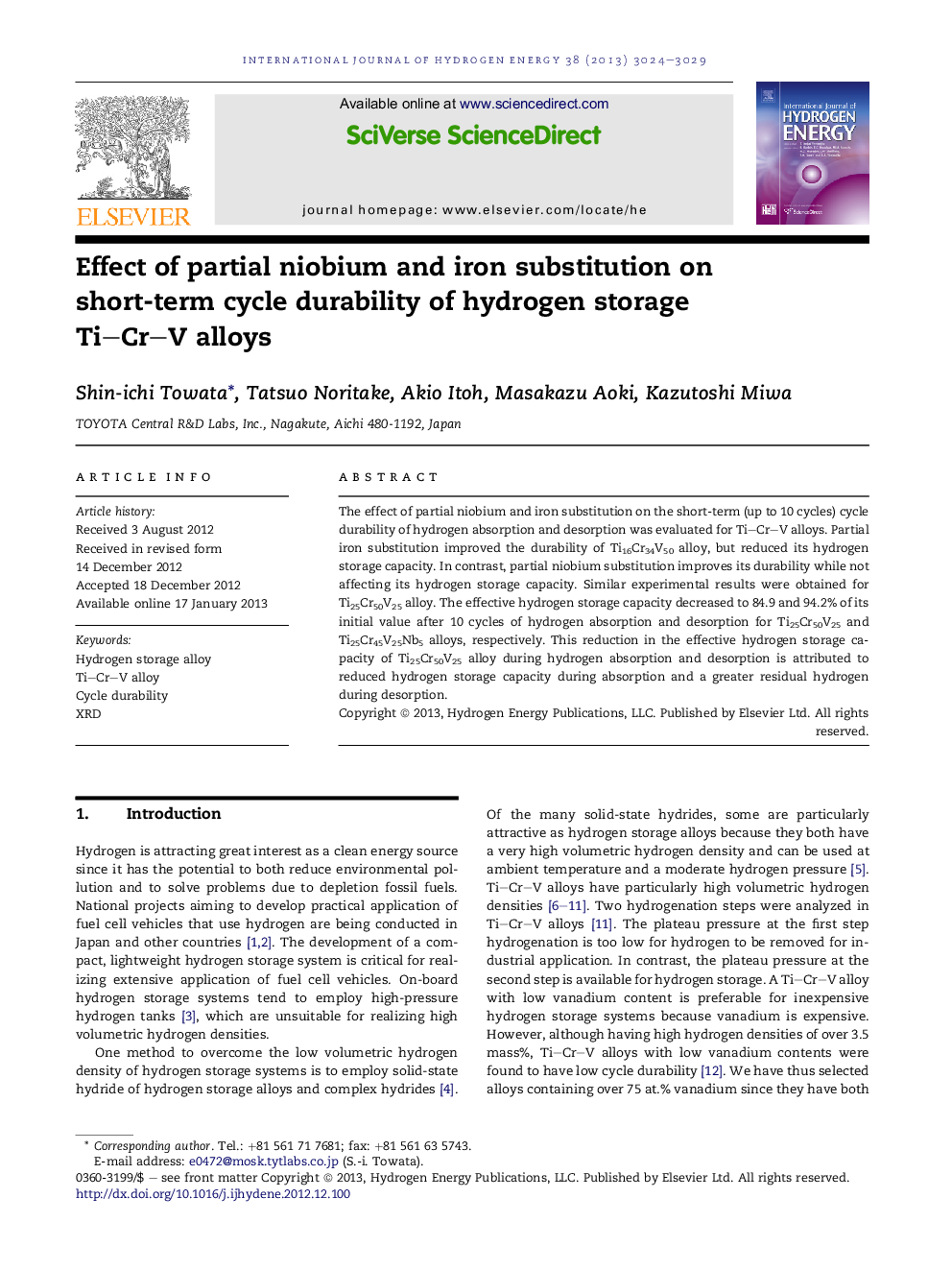| Article ID | Journal | Published Year | Pages | File Type |
|---|---|---|---|---|
| 1281969 | International Journal of Hydrogen Energy | 2013 | 6 Pages |
The effect of partial niobium and iron substitution on the short-term (up to 10 cycles) cycle durability of hydrogen absorption and desorption was evaluated for Ti–Cr–V alloys. Partial iron substitution improved the durability of Ti16Cr34V50 alloy, but reduced its hydrogen storage capacity. In contrast, partial niobium substitution improves its durability while not affecting its hydrogen storage capacity. Similar experimental results were obtained for Ti25Cr50V25 alloy. The effective hydrogen storage capacity decreased to 84.9 and 94.2% of its initial value after 10 cycles of hydrogen absorption and desorption for Ti25Cr50V25 and Ti25Cr45V25Nb5 alloys, respectively. This reduction in the effective hydrogen storage capacity of Ti25Cr50V25 alloy during hydrogen absorption and desorption is attributed to reduced hydrogen storage capacity during absorption and a greater residual hydrogen during desorption.
► We found a way to both reduce V content and improve cycle durability for Ti–Cr–V alloy. ► Nb substitution improved cycle durability with high hydrogen storage capacity. ► The concept of Nb substitution is applicable for 25 at.% vanadium Ti–Cr–V alloy. ► Reduction of hydrogen storage capacity during absorption caused cycle degradation.
